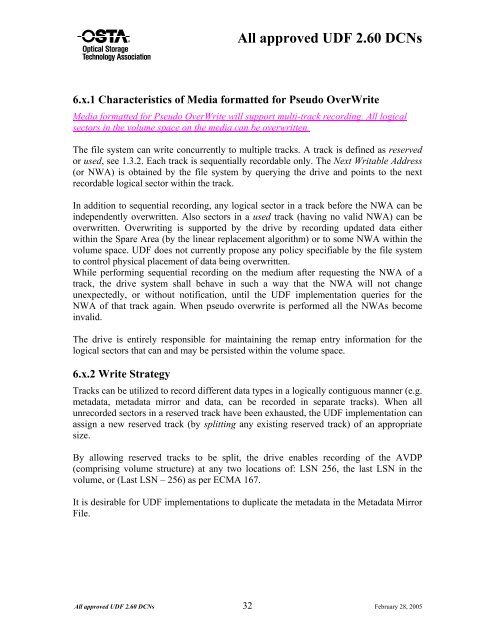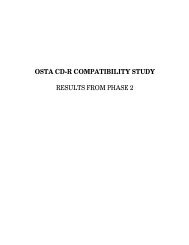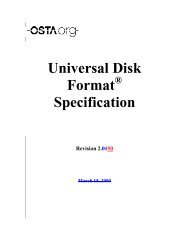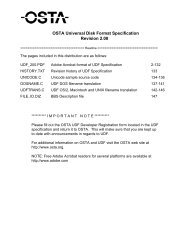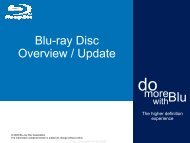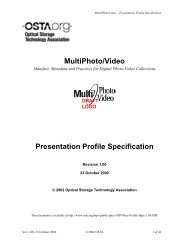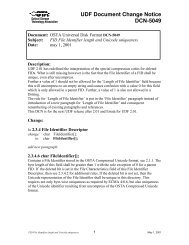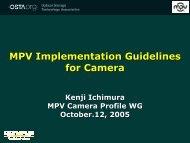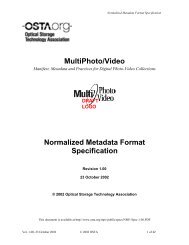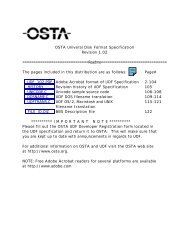All approved UDF 2.60 DCNs
All approved UDF 2.60 DCNs
All approved UDF 2.60 DCNs
You also want an ePaper? Increase the reach of your titles
YUMPU automatically turns print PDFs into web optimized ePapers that Google loves.
<strong>All</strong> <strong>approved</strong> <strong>UDF</strong> <strong>2.60</strong> <strong>DCNs</strong><br />
6.x.1 Characteristics of Media formatted for Pseudo OverWrite<br />
Media formatted for Pseudo OverWrite will support multi-track recording. <strong>All</strong> logical<br />
sectors in the volume space on the media can be overwritten.<br />
The file system can write concurrently to multiple tracks. A track is defined as reserved<br />
or used, see 1.3.2. Each track is sequentially recordable only. The Next Writable Address<br />
(or NWA) is obtained by the file system by querying the drive and points to the next<br />
recordable logical sector within the track.<br />
In addition to sequential recording, any logical sector in a track before the NWA can be<br />
independently overwritten. Also sectors in a used track (having no valid NWA) can be<br />
overwritten. Overwriting is supported by the drive by recording updated data either<br />
within the Spare Area (by the linear replacement algorithm) or to some NWA within the<br />
volume space. <strong>UDF</strong> does not currently propose any policy specifiable by the file system<br />
to control physical placement of data being overwritten.<br />
While performing sequential recording on the medium after requesting the NWA of a<br />
track, the drive system shall behave in such a way that the NWA will not change<br />
unexpectedly, or without notification, until the <strong>UDF</strong> implementation queries for the<br />
NWA of that track again. When pseudo overwrite is performed all the NWAs become<br />
invalid.<br />
The drive is entirely responsible for maintaining the remap entry information for the<br />
logical sectors that can and may be persisted within the volume space.<br />
6.x.2 Write Strategy<br />
Tracks can be utilized to record different data types in a logically contiguous manner (e.g.<br />
metadata, metadata mirror and data, can be recorded in separate tracks). When all<br />
unrecorded sectors in a reserved track have been exhausted, the <strong>UDF</strong> implementation can<br />
assign a new reserved track (by splitting any existing reserved track) of an appropriate<br />
size.<br />
By allowing reserved tracks to be split, the drive enables recording of the AVDP<br />
(comprising volume structure) at any two locations of: LSN 256, the last LSN in the<br />
volume, or (Last LSN – 256) as per ECMA 167.<br />
It is desirable for <strong>UDF</strong> implementations to duplicate the metadata in the Metadata Mirror<br />
File.<br />
<strong>All</strong> <strong>approved</strong> <strong>UDF</strong> <strong>2.60</strong> <strong>DCNs</strong> 32 February 28, 2005


